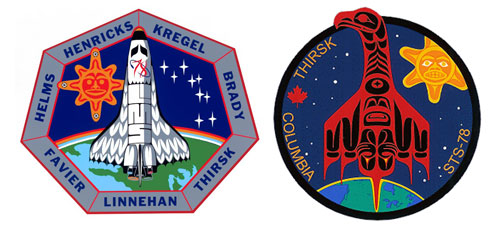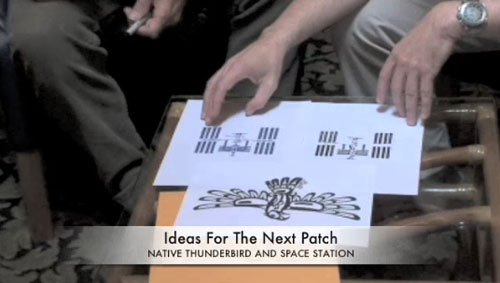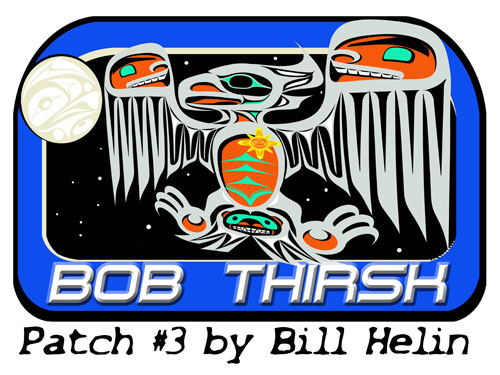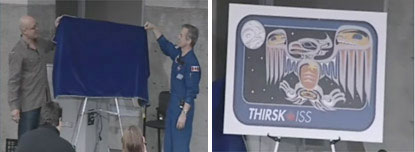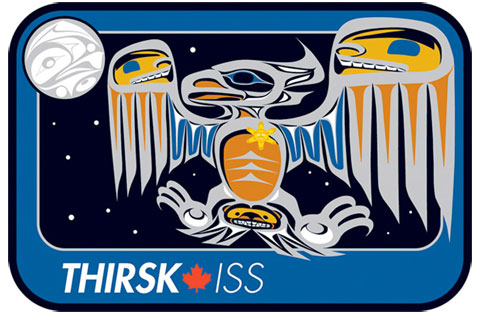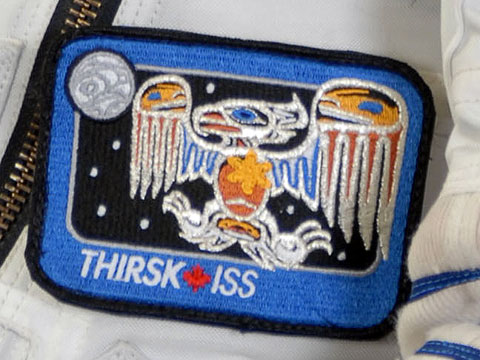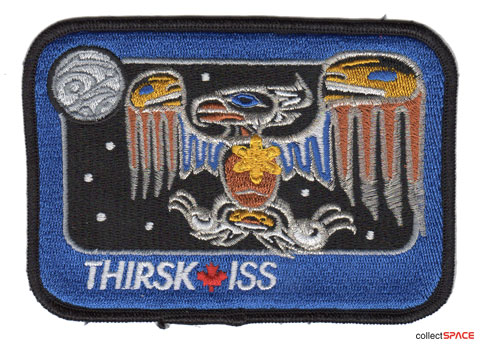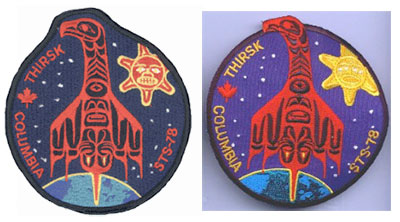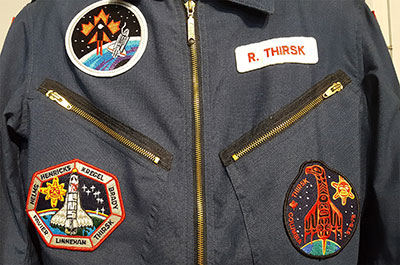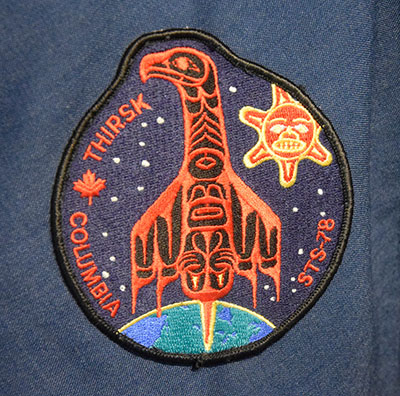Robert (Bob) Thirsk First Canadian Expedition CrestThis patch commemorates Canada's first long duration Expedition onboard the International Space Station (ISS). Canadian Space Agency astronaut Dr. Robert Thirsk will live and work in the Station for six months. Robert is an admirer of Pacific Northwest Indigenous art, and is honoured that Bill Helin, a renowned Tsimshian artist has accepted to portray his mission through the use of several of its mythical figures.
The International Space Station has now become the largest and most powerful spacecraft in history. As viewed from above, the ISS resembles a great soaring bird. The legendary Thunderbird is a creature of great power and strength and is featured as the central element of this patch design. It resembles the near-complete Station during the mid-2009 timeframe.
Several of the structural components of the International Space Station are abstractly depicted by anatomical elements of the Thunderbird. The Space Station's eight solar arrays are depicted by the outermost large feathers of the Thunderbird's great outstretched wings. The inner triplets of smaller feathers represent the thermal radiators that provide cooling to the Station's onboard systems and astronaut inhabitants. The head and beak represent the modules of the Japanese and European partners. Canada's contributions to the international partnership, the ISS robotic manipulators, are represented by the curled appendages on the back of the head. The blue ovoid of the Thunderbird's eye indicates the location of the Node 2 docking port, where the new Japanese cargo vehicle, HTV, will be berthed with the aid of Canadarm2.
Human faces adorn each wing. These faces are identical in form and kinship. One face symbolizes the astronaut crew in orbit, while the other symbolizes the large support team on Earth. The two faces gaze with trust and respect at one another in their common pursuit of the Expedition objectives. This unique partnership between the crew and the ground support team is the basis of the first Canadian Expedition.
A bear head is stylistically depicted within the tail of the Thunderbird and signifies the Russian portion of the Station. The tail feathers identify the four Russian modules including the MRM2 module that will be added to the Station in late 2009. The Thunderbird's two claws are outstretched and symbolize they are ready to grasp the American, Russian and Japanese spacecraft that will dock with the Station during the Increment 20/21 timeframe.
The torso of the Thunderbird represents the American Laboratory as well as the laboratories of the partner nations. The ribs represent the research racks and experiment facilities - the settings for innovative research in science, engineering and medicine. The knowledge gained from the onboard research activities during Increments 20 and 21 will benefit people on Earth.
A radiating Sun occupies the position of the heart within the Thunderbird's torso. As the most important aboriginal symbol of life, the Sun represents the enhanced life support system, which now provides the Station with the capability to support a crew of six astronauts.
The silver outline of the Thunderbird recalls the glistening exterior of the Station when sunlight sparkles off of its aluminum structure. The golden yellow and brown of the wings are similar in the coloration to the Station's solar arrays.
The head of a Raven is depicted within the Moon. In its partially-open beak is a sun disk. It was the cunning Raven, according to Northwest Coast native legend, who stole the sun from a box in a powerful chief's house many years ago and flung it into the sky to bring light to the world for the first time.
While the Thunderbird is revered as the chief of Earth's skies, he has the heart of an explorer. His gaze is directed toward the Moon. He yearns to explore new destinations in space and to undertake new adventures. Similarly the first Canadian Expedition aboard the International Space Station rekindles a national spirit of exploration. Our enhanced abilities to live and work in space will enable Canada to participate with other nations in the exploration of future destinations in space.
This patch was designed by Tsimshian artist, Bill Helin, a friend and supporter of the Canadian space program.











